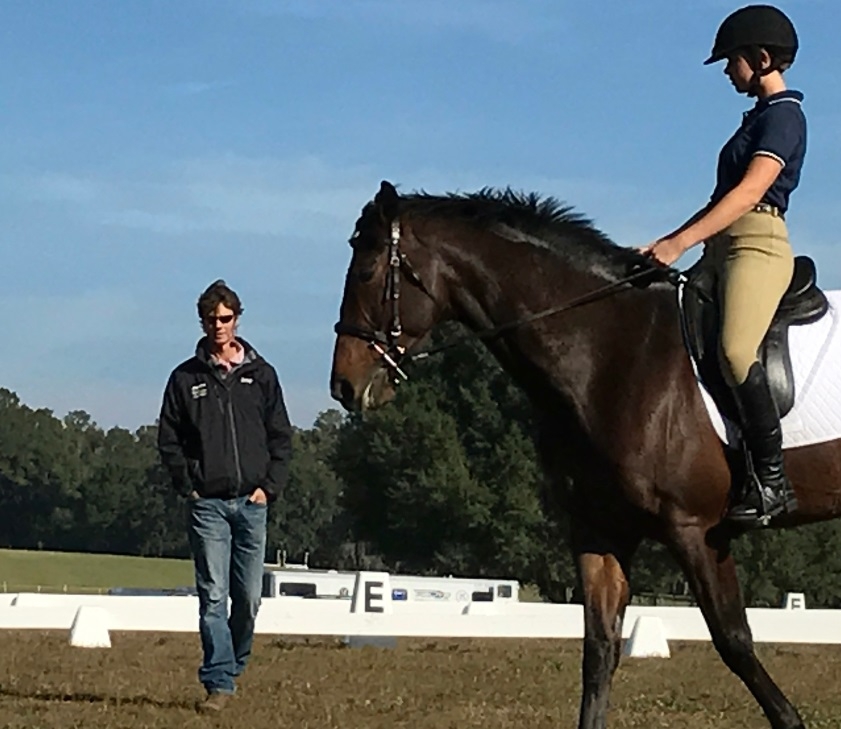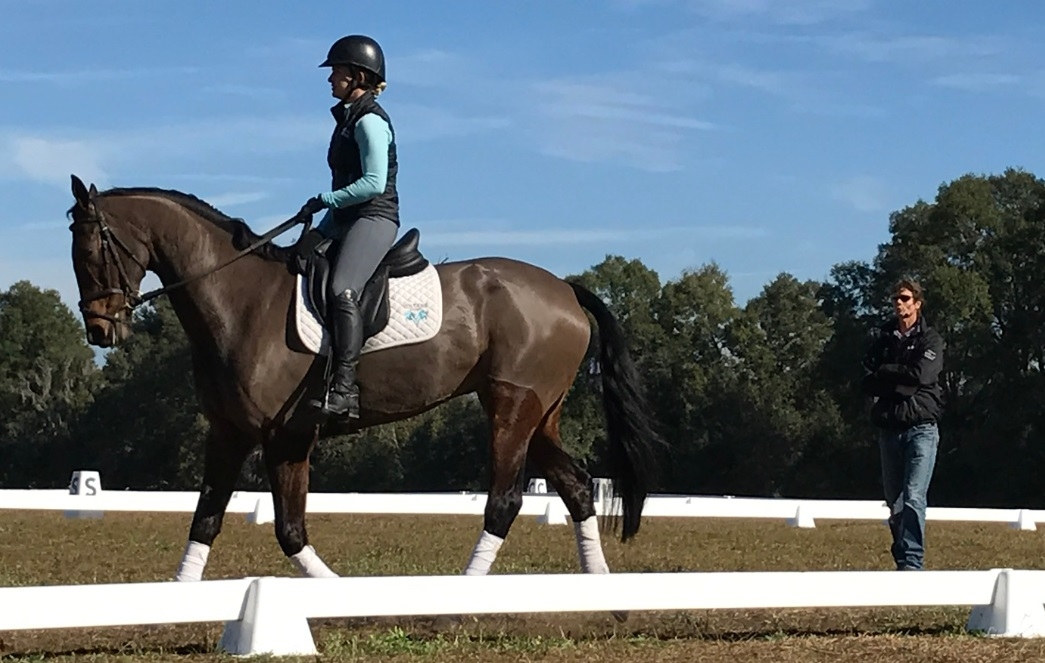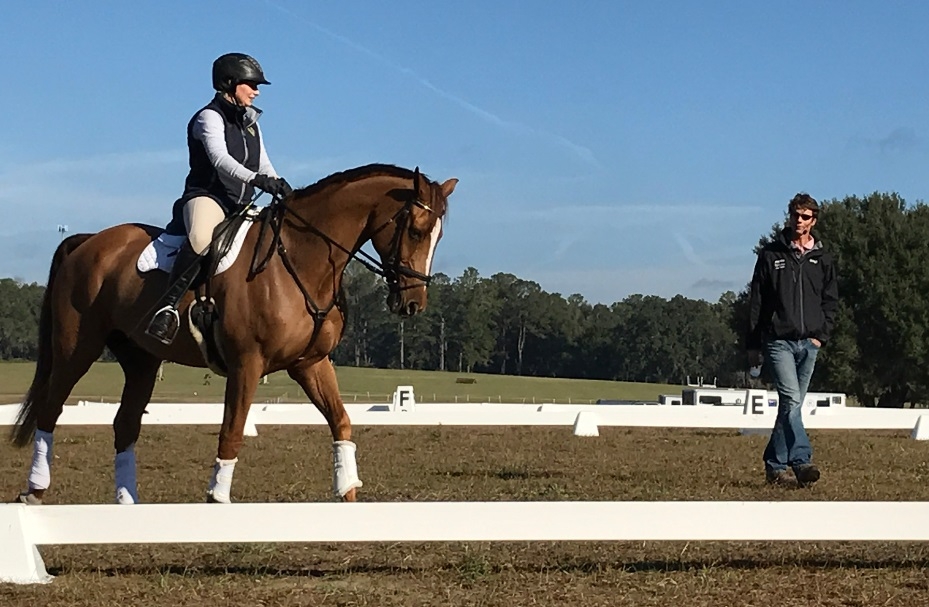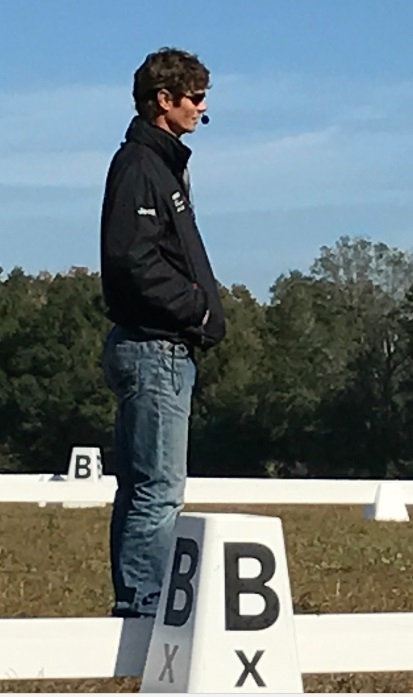Much of my season last year was inspired by phrases such as “Channel your inner William!” “Be William!”

While not nearly as hilarious as “Be like Kyle”,

it became a thing of its own & even appeared in some BadEventer Tales.
Having spent a year attempting to channel William Fox-Pitt, I was pretty darn excited when I saw he was going to be teaching a clinic in Ocala.

Unfortunately the timing was such that all my horses are on an end-of-season break, so watching & blogging are the best I could do.
It was unusually cold for Ocala & I was woefully underdressed to sit by a dressage arena furiously taking notes.

The dressage lessons carried a common theme interspersed with fantastic comments such as, “I’m not good at changes either but I’ll take a look.”

The theme was connection, connection, connection.

Did I mention connection?

Here’s a few takeaways I wrote down.
“You need a confident connection. The best horses are the ones that argue the least – you don’t see Micheal Jungs horses arguing on course.”
“The Golden rule is connection, they have to be connected, forward & balanced. Do corners, straight lines, leg yields, don’t just do circles.”
“That’s what the winter is for boring hard work.”
He had several riders flip their hands over on the reins and use a driving rein position. He even had one ride with one hand on both reins. That was particularly interesting because I had watched him warm up for dressage at Rolex with one hand on both reins and I thought he was just such a Bad A$$ he only needed one hand on the reins at Rolex. Of course that’s true too.
After all the dressage lessons he asked the auditors if they had any questions & no one spoke up, so I had my chance to ask the one & only William a question.

I asked him to discuss the different hand position he had several riders use.
He said it creates a different feeling for the horse, that the most restrictive “blocked” position we can use is the “correct position” and flipping the reins over helps unlock the elbows and prevents riders from sticking their elbows out. He told one rider she needed to use that hand position at home for the next 6 months!
Here is a rider riding with one hand…..

Essentially all of the dressage lessons focused on basics. Are you connected? Do you have a good feel down the reins?

He described the feel you need as a solid hand shake. This idea really struck home for me when he said, “don’t have a wimpy handshake, you know what a bad feeling you get when someone gives you a creepy handshake so don’t give that icky feeling to your horse.”

More on the handshake feeling, “A weak feeling is trouble and a heavy feeling is hard to do anything out of so you need a confident connection.”
More basics. Will the horse bend? Can you go forward and back between gears? He said over and over that people tend to only ride in circles at home, and they need to do straight lines and corners, speed up and slow down.
He mentioned that the horse needs to stretch down from the breastplate area, not just behind the ears.
He had a few horses that were reluctant to bend and he walked with them and demonstrated how much they need to be able to bend.

He mentioned a few times that you can’t fiddle with the reins. “They have to be lighter off the leg to become lighter in the reins, stop fiddling with your hands, you need to fiddle more with your leg.” “You can change the bend inside & then outside but don’t fiddle!”
The constant theme was connection and a few times he mentioned, “yes the horse is a little heavier than maybe you like but you have a nice confident connection so be grateful for that and work on the rest.”
When he touched on a specific movement his comments included,
“Each movement has a beginning, a middle and an end. We tend to drift into and out of movements and they can’t have grey areas. You need to be definite. For example, when coming up the quarterline to start a lateral movement, finish the turn, get straight, then start the movement. It’s better to show the beginning and start a few steps late than to just drift into the movement out of the turn.” He said you need to think about preparation, “make the turn, think am I ready? Then, here we go!”

He repeated the need for a confident connection throughout each lesson and made the comment several times that, “the best horses are the ones that argue the least, you don’t see Michael Jung’s horses arguing!”
A few more interesting thoughts….. he doesn’t like loose ring bits. As his focus is connection, he said it’s harder to be connected with a loose ring because it’s “too wibbly wobbly of a feeling.” He told a couple riders, “I’m not a loose ring fan, and neither is your horse.”
He had several riders do a 1/4 walk pirouette, he likes the 1/4 turn better than the 1/2 because it keeps their feet moving.
He commented about giving one horse a break before they go in the arena so they don’t go in with their neck aching.
Another common theme was, “Don’t be afraid to ask! He might not like it but you need to ask anyway.” “They can’t go around like a plank, they have to be rideable.” “It’s O.K. to ask and have it go a bit wrong, today’s a good day for it to go a bit wrong!”

One horse he mentioned, “because he doesn’t hurry you don’t think about the half halt, but it will help develop his strength so it should be part of his program.”
He was charming, funny and focused. I’ll say every lesson was thorough and he was particularly insightful as to each horse & riders strengths and weaknesses. And of course everything began and ended with a discussion about CONNECTION!

Stadium Jumping Next!
William Fox-Pitt Clinic Recap Show Jumping